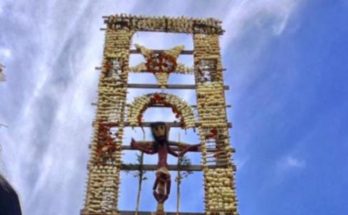By Arturo Morales Tirado
Millions in transit to the North
There are two migratory species threatened with extinction that year after year cross the skies of this Frontera Tierra Adentro (Inland Border) around San Miguel de Allende: one of them is the American Stork (Mycteria americana), a recurring visitor during the summer in the wetlands of the Laja River; the other migration is that of the monarch butterfly (Danaus plexippus), which, around the spring equinox, crosses our skies in spring on its north migration and around the autumn equinox, it does so on its south migration, towards the fir forests (Abies religiosa) of the Neo-Volcanic Axis between the states of Michoacán and the State of Mexico.
The monarch butterfly is a lepidopteran insect that weighs half a gram, these individuals, in four generations, make a total migration of about 10,000 km during the year, migrating north from the Mexican forests to the area surrounding the Great Lakes in the southern Canada and northern United States and in the southern migration, in the opposite direction, starting (on average) from August 15. Surprisingly, the north migration is carried out by three different generations of monarch butterflies (they live between 1.5 and 2 months), but the one that flies in the south migration is a single generation (Methuselah generation) which can live up to eight months.
Right now, at the end of winter, from the second week of February, in the fir forests, this species that presents sexual dimorphism, is reproducing in these beautiful Mexican landscapes, in this vital activity, after five frenetic days, the males die and the females, which by the way, can fertilize up to 400 eggs with three different males (greater outbreeding) prepare themselves by feeding on the nectar of various wild flowers and consuming water and minerals dissolved in it, for their north migration, which, on average, begins in the second week of March.
Regarding this amazing natural phenomenon, it is worth mentioning some researchers who have been crucial in the knowledge and subsequent amazement of this almost incredible animal; in the first place, Dr. Alfred Urquhart, who in 1975 after almost 30 years of research managed to identify the annual migration of the monarch butterfly, later, Dr. Orley Chip Taylor, who, through labels on the wings of the butterflies butterflies, identified with greater precision the migratory routes widely distributed around the great lakes to the 12 natural sanctuaries that concentrate millions of butterflies in the Mexican forests within the Monarch Butterfly Biosphere Reserve (UNESCO-2010) and has been a promoter and generator of the association Monarch Butterfly Fund and the Monarch Watch Org. In Mexico, among others, through the scientific dissemination of CONABIO, Dr. Carlos Galindo Leal has contributed to valuing this amazing migratory species that visits us twice a year on this Inland Border.
In San Miguel de Allende, around the spring equinox, we can observe over the wetlands that surround the city, and even over us, passing through the sky of some parts of the urban area, those small orange spots gliding over the currents hot springs to the north. We, in addition to observing and valuing them knowing their complex phenomenon of migration and their life cycle in four generations, we can contribute to their preservation, first, without disturbing them any more, without touching them, eliminating our impact on them and their habitat as much as possible; also, trying to preserve the local wildlife habitats that we still have.
In this sense, we can synthesize that we, human beings, are having an unfavorable impact on biodiversity, in general, and in particular, on migratory species such as the American stork (which we will deal with on another occasion) and the butterfly monarch in 5 ways: 1.- With disorderly urban growth (without territorial-ecological planning and/or respect for it), 2.- monocultivos and commercial agriculture, 3.- isolation of natural areas (disconnecting biological corridors), 4.- introducing exotic species to the habitat (mainly flora and fauna), 5.- contaminating the subsoil, the surface and the atmosphere.
These monarch butterflies that we will be able to observe in spring, will cross into the United States at the beginning of April, they do so without a passport, without jackets, without GPS, without sunglasses, we will have them back, in the migration from the south in the last week of October; Let’s hope that by the fall equinox we will have better conditions in their habitats around San Miguel de Allende or at least, better knowledge of them, high understanding, appreciation and sensitivity to their amazing migratory cycle of life.




